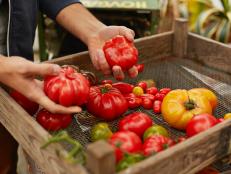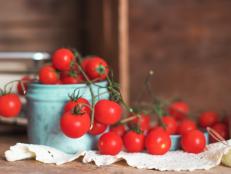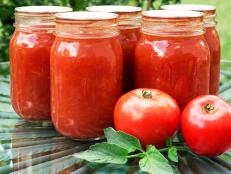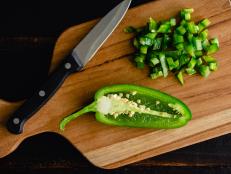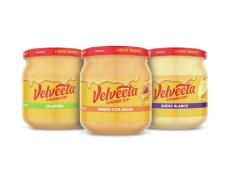Canned Tomato Guide
When you can't get perfect summer tomatoes, use canned for your favorite sauces, soups and sides. If you notice a light metallic taste, give the tomatoes a quick squeeze of fresh lemon. For easy impromptu meals, always keep your pantry stocked with these items:
- Whole tomatoes are generally sold peeled, in either juice or puree. This is usually the highest quality tomato product. If your recipe calls for crushed, simply break the tomatoes up with your hands or fist as they go into the pot. Add the juices to the recipe when you need more bulk and tomato flavor.
- Diced tomatoes are generally tomato chunks packed in tomato juice. They can be an excellent timesaver.
- Crushed tomatoes are a mixture of diced tomatoes and tomato puree or paste.
- Stewed tomatoes are cooked and then canned, usually with other seasonings and sugar added.
- San Marzano tomatoes are a variety from Naples, Italy, that are especially flavorful and good in sauces.
- Fire-roasted tomatoes add a smoky char flavor to dishes.
- Tomato Sauce is not the same as spaghetti or Marinara sauce. Sauces made from tomato puree are generally better than those made from water and tomato paste. Read the labels to see what you're getting.
- Sun-dried tomatoes are sold either dry or packed in oil. The dry ones can be reconstituted in hot water; the oil-packed ones are already tender. Both give meals a shot of intense tomato flavor.
- Tomato paste is made from long-cooked tomatoes. We like the kind in tubes, because it reduces waste. Used judiciously, tomato paste can enrich and deepen a dish, but too much can make your dish taste less fresh.
When to use:
- For cooked sauces, canned tomatoes are vastly preferable to out-of-season supermarket tomatoes that are picked before fully ripe and bred for sturdiness to survive the long haul to market with minimal damage. Not only are they preserved at their peak, but the varieties grown for canning — Romas, San Marzanos, etc. — are chosen for their high ratio of flesh to juice. Their unique meatiness makes them ideal sauce tomatoes.
- If tomatoes are to be left raw, then canned should not be substituted for fresh. Raw sauces and salsas are not the place for canned tomatoes. Canned tomatoes have been 'cooked' during processing.
How canning works:
- The tomatoes are picked at their ripest and processed immediately; most canning facilities are located near farms.
- First, the skins are removed, either by steaming or a hot bath.
- Next, the tomatoes go into cans along with salt and a filler, either tomato juice or puree. (Be aware added salt can bring up the sodium count in your recipe.)
- Finally, the can is sealed, heated and held at temperature until the contents are sterile.
- The sterilization process actually cooks the tomatoes right in the can.
How long do they last in the pantry?
Canned tomatoes last 12-18 months at room temperature. The longer they sit, though, the more they acquire a tinny flavor.
Tips
- For a smoother sauce, avoid diced canned tomatoes. Calcium chloride is often added as a firming agent, which limits the tomatoes' ability to break down during cooking.
- Packers generally save their ripest, most attractively-colored specimens for use as whole, crushed and diced tomatoes. Lesser tomatoes are reserved for use in paste, puree or sauce.
- Many crushed and diced canned tomatoes are thickened with tomato puree (tomatoes that have been cooked and strained), which changes the flavor of the sauce. Read the label.
- Tomatoes packed in juice tend to have less sodium and a fresher flavor; pour the juice off and reserve to add moisture to sauce if needed.
























